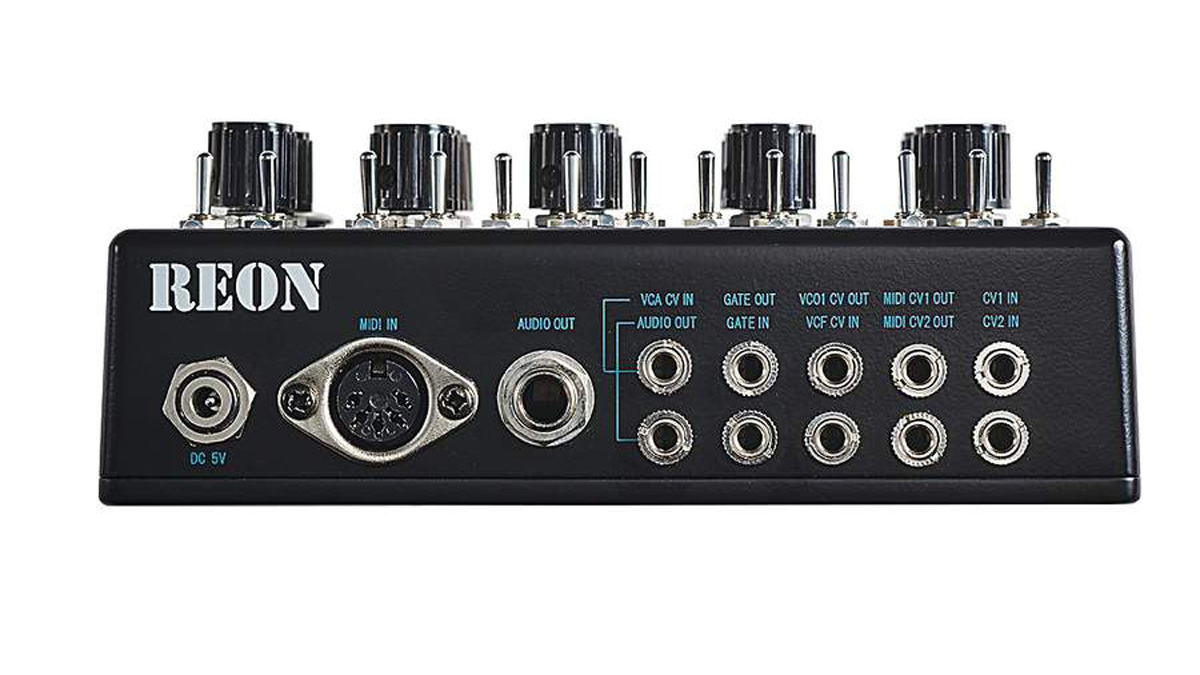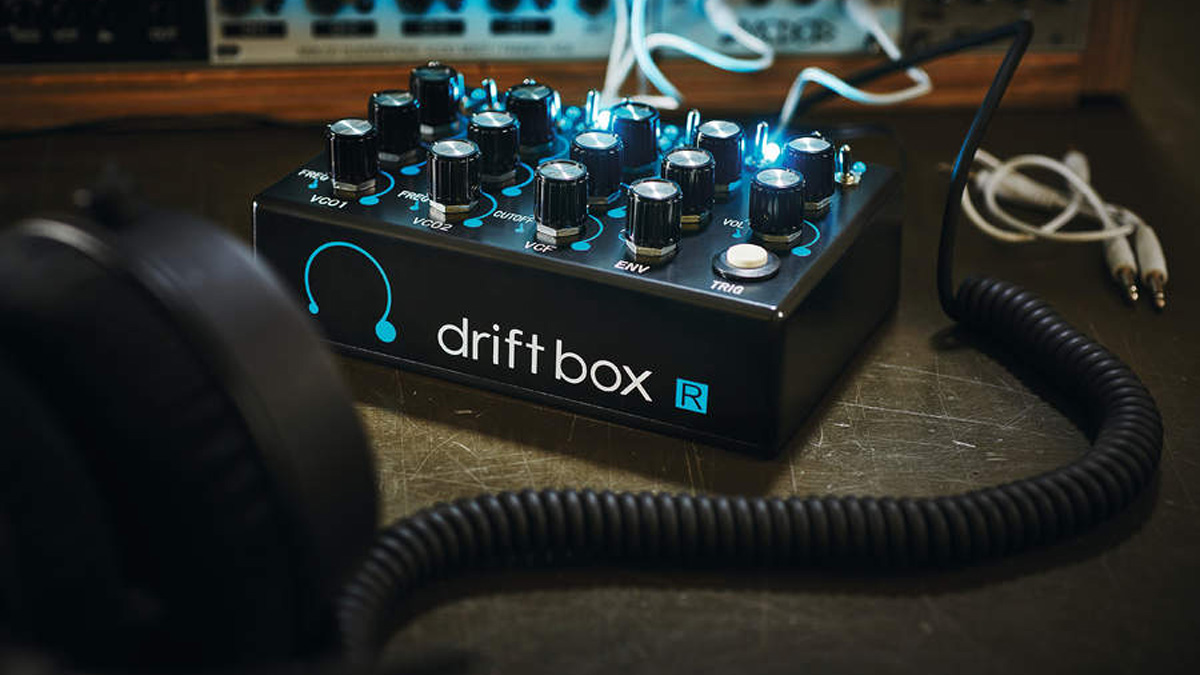MusicRadar Verdict
It’s good to see Reon products becoming more available internationally, but they will face some stiff competition.
Pros
- +
Works well as a standalone noise and drone generator.
- +
MIDI complements the strong showing elsewhere in the analogue interfacing department.
- +
Small footprint belies flexibility and power.
Cons
- -
Additional dedicated LFO would have expanded the tonal range and usefulness of the synth.
- -
VCO frequency parameter knobs are very sensitive to small changes.
- -
A lot of competition at this price point.
MusicRadar's got your back
Reon is a little-known company outside of its native Japan, though it has been designing and building its Driftbox units in Osaka for a number of years.
Things, however, are set to change with the recent news that Korg will be distributing its products. Currently this extends to seven products which embrace synthesis, sequencing and controller-based applications (see boxout for more). Here we’ll be taking a look at the Driftbox R(_midi) Dual Voice Analog Synthesizer.
Although its name might be a mouthful, the “(_midi)” addition to its appellation hints that there may be a Driftbox R without MIDI. This was originally a hard-to-come-by limited edition synth, but seems to have been resurrected in the current range. Delve deeper and you’ll find that this latest Driftbox has a PCB dated 2014 labelled with ‘Driftbox R_Limited’, so the similarity is more than just in the name. All the Driftbox units are built into similarly-sized black metal instrument cases, which definitely aren’t lookers.
The Driftbox R(_midi) is one of the most knob and switch-laden of the range, with 15 pots and 13 two-way toggle switches providing the bulk of the programming options. However, as we’ll see, there’s a little more to the synth than first glances might imply.

The Driftbox R has two independent voltage controlled oscillators that feed a voltage-controlled filter (VCF) and voltage-controlled amplifier (VCA) section. These are combined with, and controllable by, a basic envelope generator (EG). A front panel momentary push button switch can be used to trigger the EG, which also sends a positive 5V signal to the Gate Out on the rear. More on the interfacing options shortly.
On the face of it, both VCOs look to be the same, with a similar set of three knobs and switches assigned to each. Each one has controls for oscillator frequency, volume and (frequency) modulation amount. Switches allow you to set the octave range of each VCO, plus waveform and modulation source (for VCO 1) or modulation/oscillator sync (for VCO 2).
The waveform selector for VCO 2 simply switches between Sawtooth and Square wave shapes, though the VCO 1 selector hides a more complex range of options. Here, each movement of the toggle up or down moves to the next waveform (from a total selection of seven). So, despite appearances, VCO 1 can be coaxed into generating sawtooth, triangle, square (50% duty cycle), rectangle (70%) and square (25%) waves, as well as white and pink noise.
Want all the hottest music and gear news, reviews, deals, features and more, direct to your inbox? Sign up here.
Of the current seven-strong range, the Driftbox R Limited is closest to the Driftbox R(_midi) - MIDI being the only difference. Searching online for the Driftbox R(_midi) may also show a synth with different labelling and toggle-switches to the one seen here The range also includes the Driftbox SE Digital Paraphonic Synthesizer, a MIDI-equipped, DCO-based synth with a 12dB/octave Steiner Parker filter and so-called ’Drift’ joystick. A joystick also features in the dual VCO Driftbox S, five employed in Driftbox W. The Driftbox J uses two joysticks as XY CV controllers and also features a two-channel programmable CV sequencer. Finally, the Driftbox C is a four-channel, two-bus mixer capable of handling audio and CV signals.
Sticking with VCOs and modulation for a moment, it is clear from the front-panel and specs that there is no independent LFO. However, each VCO can be modulated by the other, and unlike a conventional LFO the modulation can run from simple vibrato into more complex audio-rate FM territory. VCO 1 can also be modulated by the EG (perfect for effect sweeps), with VCO 2 replacing this option with the ability to sync its wave generator to that of VCO 1.
The Driftboxes very much encourage user interaction and even the VCOs taken on their own are capable of some nice (and nasty) textures that are perfect for creating builds, breakdown and background effects. As it is, there is more fun to be had as we move to the filter section. This is a great-sounding 24dB/octave filter with variable cutoff and resonance (that proceeds nicely into self-oscillation) that can dial-up a nice line in squelchiness when swept if required. In addition to the default modulation from the EG, the filter cutoff can be controlled by the output of VCO 1, VCO 2 or both at the same time (with the modulation depth set by the volume of each oscillator). This is where the synth takes things into more unpredictable territory, as it is possible to have multiple audio-rate cross-modulations between the oscillators and filter section.

The VCA section is a simple affair with only a depth control knob - though it can be overridden with a flick of the hold switch, turning the Driftbox into an ideal drone generator - and is partnered with a switch for turning off the audio output completely. The aforementioned envelope generator is switchable between two (attack and decay) and three (attack, sustain and release) stages, with both normal and inverted polarity options. On the back, you’ll find the MIDI IN socket and audio output (on both 1/4” and minijack).
Both VCOs get their own (V/octave) CV input for controlling frequency, though the CV link switch lets you route one incoming CV to both VCOs. There’s also a gate input (to trigger the EG), CV inputs to the VCA and VCF sections, a CV out from VCO 1, gate out from the front panel Trig button and cryptic MIDI CV1 and 2 outs. This unassuming box has its limitations - and a lot of competition at this price - but it is capable of creating a wide range of musical (and non-musical) tones and fits well into a larger analogue setup.
